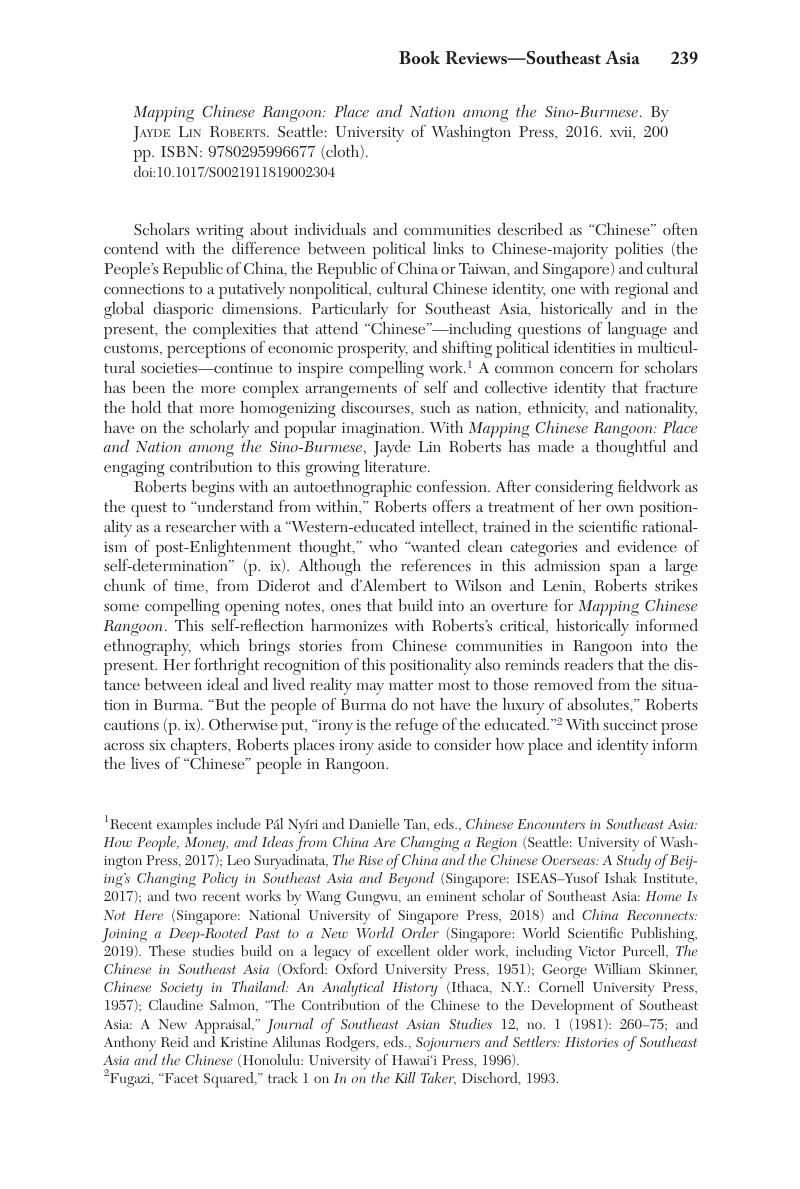No CrossRef data available.
Published online by Cambridge University Press: 24 February 2020

1 Recent examples include Nyíri, Pál and Tan, Danielle, eds., Chinese Encounters in Southeast Asia: How People, Money, and Ideas from China Are Changing a Region (Seattle: University of Washington Press, 2017)Google Scholar; Suryadinata, Leo, The Rise of China and the Chinese Overseas: A Study of Beijing's Changing Policy in Southeast Asia and Beyond (Singapore: ISEAS–Yusof Ishak Institute, 2017)CrossRefGoogle Scholar; and two recent works by Wang Gungwu, an eminent scholar of Southeast Asia: Home Is Not Here (Singapore: National University of Singapore Press, 2018) and China Reconnects: Joining a Deep-Rooted Past to a New World Order (Singapore: World Scientific Publishing, 2019). These studies build on a legacy of excellent older work, including Purcell, Victor, The Chinese in Southeast Asia (Oxford: Oxford University Press, 1951)Google Scholar; Skinner, George William, Chinese Society in Thailand: An Analytical History (Ithaca, N.Y.: Cornell University Press, 1957)Google Scholar; Salmon, Claudine, “The Contribution of the Chinese to the Development of Southeast Asia: A New Appraisal,” Journal of Southeast Asian Studies 12, no. 1 (1981): 260–75CrossRefGoogle Scholar; and Reid, Anthony and Rodgers, Kristine Alilunas, eds., Sojourners and Settlers: Histories of Southeast Asia and the Chinese (Honolulu: University of Hawai‘i Press, 1996)Google Scholar.
2 Fugazi, “Facet Squared,” track 1 on In on the Kill Taker, Dischord, 1993.